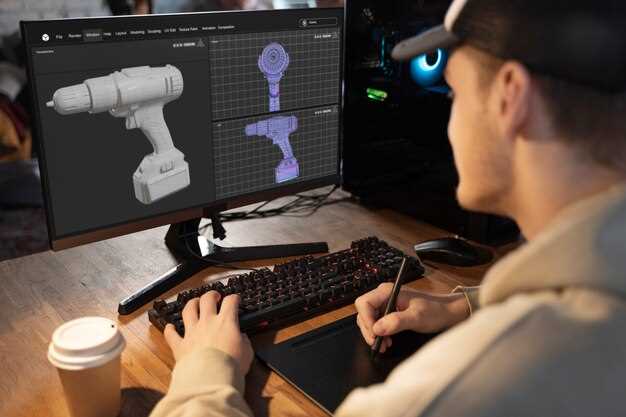
In today’s automotive landscape, the demand for custom parts has surged, particularly within the aftermarket segment. Enthusiasts and casual owners alike are seeking ways to enhance the performance and aesthetics of their vehicles, leading to an ever-expanding marketplace for parts. However, navigating this diverse online space can be daunting, given the multitude of options available.
Finding the right custom parts involves more than just a quick search; it requires a thoughtful approach to ensure compatibility, quality, and price. As you explore the myriad of suppliers and websites, understanding what makes a source reliable can greatly impact your purchasing experience. This guide aims to provide you with the essential tools and strategies needed to pinpoint the best aftermarket components tailored to your specific needs.
Whether you are looking to upgrade your engine components, personalize your vehicle’s exterior, or improve its handling, the right custom parts can make all the difference. By leveraging the insights shared in this guide, you will be well-equipped to traverse the online market and secure the best products for your project. Let’s dive into the key factors that will help you make informed decisions while shopping for custom parts online.
Identifying High-Quality Custom Parts Suppliers

When searching for the best custom parts suppliers for your bike, it is crucial to ensure that they provide high-quality aftermarket components. Quality plays a significant role in the performance, durability, and overall satisfaction with your bike upgrades. Here are key factors to consider when evaluating suppliers.
1. Reputation and Reviews
Check the reputation of the supplier in the biking community. Look for online reviews, testimonials, and ratings that can help you gauge their reliability. Customer feedback often highlights the performance and longevity of aftermarket parts, giving you insights into what to expect.
2. Range of Products
A good supplier should offer a wide range of custom parts to cater to different bike models and preferences. Ensure they have options that align with your biking needs, whether it’s performance enhancements or aesthetic upgrades.
3. Material Quality
High-quality materials are vital for aftermarket parts. Inquire about the materials used in the manufacturing process, as this impacts the strength and longevity of the components. Suppliers that use premium materials are more likely to deliver reliable and durable parts.
4. Expertise and Customer Support
Choose suppliers that demonstrate strong knowledge about their products and the biking industry. Excellent customer support is essential; they should be able to answer your questions and provide guidance in selecting the right parts for your bike.
5. Warranty and Return Policy
Evaluate the warranty and return policy offered by the supplier. A solid warranty can indicate the supplier’s confidence in their products. A flexible return policy also provides peace of mind, ensuring that you can return parts if they do not meet your expectations.
6. Pricing and Value
While price shouldn’t be the only factor, it is essential to find a balance between cost and quality. Avoid suppliers that offer significantly lower prices than competitors, as this may indicate compromised quality. Focus on the overall value you receive, including material quality, durability, and performance.
By considering these factors, you can effectively identify high-quality custom parts suppliers, enabling you to enhance your bike with reliable aftermarket components that meet your specific needs.
Tips for Evaluating Compatibility with Your Bike Model

When searching for aftermarket parts for your bike, ensuring compatibility with your specific model is crucial for optimal performance and safety. Start by referencing your bike’s owner manual. This document typically includes the manufacturer’s specifications, which can help you identify the correct size, type, and fitment of the parts you need.
Next, take note of your bike’s make and model, as well as the year it was manufactured. Many aftermarket components are tailored to specific models, and even slight variations between years can affect compatibility. Research the manufacturer’s website or trusted bike forums to find detailed information about compatible aftermarket parts.
Another effective strategy is to check online compatibility tool features offered by many aftermarket parts retailers. These tools allow you to input details about your bike, helping in filtering the products that are suitable for your specific model. Always cross-reference with other sources to validate the information provided.
Furthermore, consult with your local bike shop. Experienced mechanics can provide valuable insights and confirm whether the parts you are aiming to install will fit your bike properly. Don’t hesitate to ask questions regarding installation and any modifications that might be necessary.
Lastly, consider user reviews and feedback from other cyclists who have installed similar aftermarket parts on their bikes. Real-world experiences can highlight potential fitment issues or advantages, giving you a clearer picture of what to expect. By following these tips, you can enhance your bike’s performance while ensuring the parts you purchase seamlessly integrate with your model.
Understanding Returns and Warranty Policies for Online Purchases
When purchasing custom bike parts online, it is crucial to understand the returns and warranty policies of the retailer. Each company has different guidelines that can greatly affect your purchasing experience and overall satisfaction with the product.
Return policies dictate how long you have to return a part if it does not meet your expectations or is incompatible with your bike. Many retailers offer a window of 30 days, but some may extend this period. It’s important to check whether returns are accepted for opened items, as many custom parts may only be returnable if they are still in their original packaging and unused.
Furthermore, understanding the procedure for initiating a return is essential. Some companies may require you to contact customer service for a return authorization number, while others might provide a simple return shipping label. Make sure to keep all receipts and documentation to facilitate a smooth return process.
Warranty policies are equally important, particularly for custom bike parts that may have specific manufacturing guarantees. A warranty typically covers defects in materials or workmanship, but may exclude damage caused by improper installation or normal wear and tear. Check the length of the warranty and the terms involved, as some products may have limited warranties due to their custom nature.
It is also wise to note whether the warranty includes coverage for repairs or replacements, as some brands may only offer refunds. Understanding these details can help you select parts that not only fit your bike’s specifications but also provide peace of mind in case of issues.
Before making a purchase, thoroughly review the retailer’s return and warranty policies. This diligence will ensure that you are prepared in case a custom bike part does not perform as expected, ultimately saving you time and hassle.
